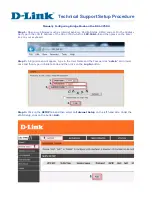
11: Using the Command Line Interface
_______________________________________________________________________________________________________
_____________________________________________________________________________________________________
© Virtual Access 2017
GW7304 Series User Manual
Issue: 1.9
Page 82 of 336
The option
'string' 'some value'
and option
'boolean' '1'
lines define simple
values within the section.
Note: there are no syntactical differences between text and boolean options. Per
convention, boolean options may have one of the values '
0
', '
no
', '
off
' or '
false
' to
specify a false value or '
1
' , '
yes
', '
on
' or '
true
' to specify a true value.
In the lines starting with a list keyword, an option with multiple values is defined. All list
statements that share the same name collection in our example will be combined into a
single list of values with the same order as in the configuration file.
The indentation of the option and list statements is a convention to improve the
readability of the configuration file but it is not syntactically required.
Usually you do not need to enclose identifiers or values in quotes. Quotes are only
required if the enclosed value contains spaces or tabs. Also it is legal to use double-
quotes instead of single-quotes when typing configuration options.
All of the examples below are valid syntax.
option example value
option 'example' value
option example "value"
option "example" 'value'
option 'example' "value"
In contrast, the following examples are not valid syntax.
option 'example" "value'
Quotes are unbalanced.
option example some value with space
Missing quotes around the value.
It is important to note that identifiers and config file names may only contain the
characters a-z, A-Z, 0-9 and _. However, option values may contain any character, as
long they are properly quoted.
















































